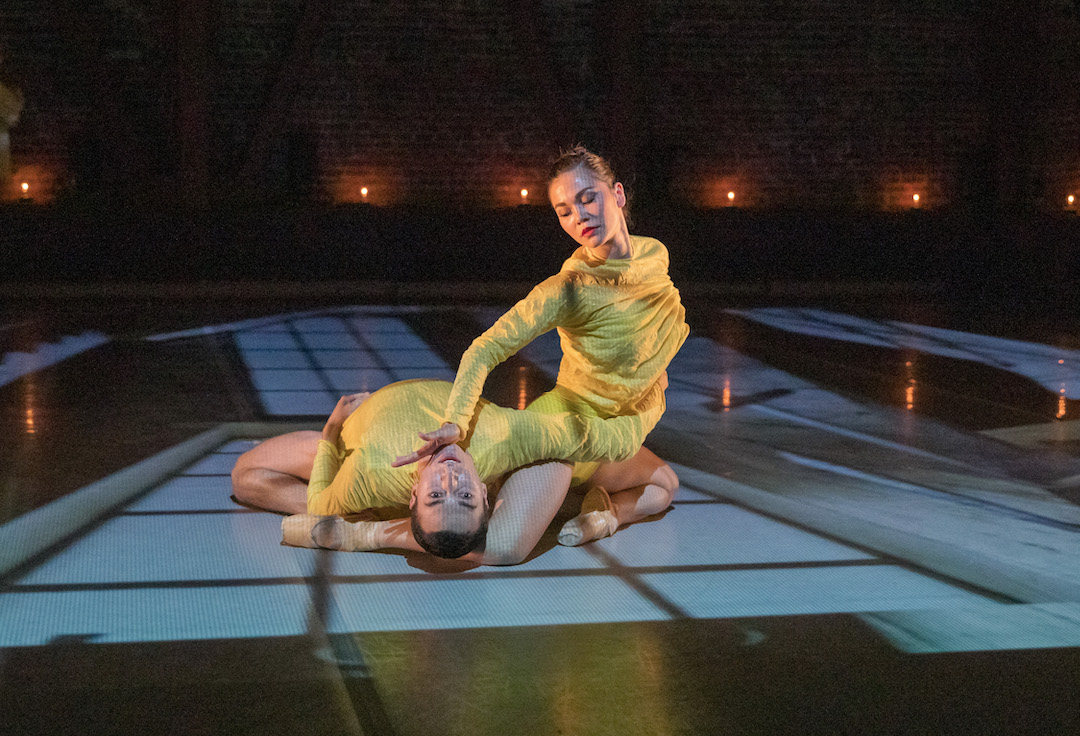At the end of Amy Seiwert’s new ballet, Verses, the woman sitting next to me in the audience said, “That was lovely. It made me want to be a dancer, and I have never felt that before.”
What more can we ask of art, than it urge us to open our eyes and our desires to experience the world in as many different ways as possible?
What more can a choreographer hope for, than to reach, ultimately, deep into our sense of empathy?
Although choreographer Amy Seiwert has been the Artistic Director of Sacramento Ballet since last July, she continues to lead her San Francisco–based company, Amy Seiwert’s Imagery. And this past month she presented SKETCH 9: Perspectives at ODC Theater.

Perspectives is the latest in an on-going annual series inaugurated in the summer of 2011. The series offers opportunities for choreographers to experiment with their work and to develop their choreographic ideas into finished world premieres. Their dance form continues to be ballet, using traditional ballet vocabulary, though not always on pointe.
Seiwert’s Verses opened the program and it was truly lovely. In the darkened field of the stage a solitary dancer crouched in the center of a projected window, the light carving out a grid of panes skewed and abstract on the black dance floor. To Chopin themes re-composed by Olafur Arnalds and Alice Sara, the yellow-garbed dancer hovered like a bird, his movements abrupt and staccato. The young and talented Austin Meiten featured in all three of the evening’s dances. He was joined soon by seven other dancers, all wonderful in their own way. Meiten and Shania Rasmussen danced a pas de deux that was achingly lyrical as images and dancers shifted around them.
For each of the SKETCH projects, Seiwert chooses a theme or element around which the choreography is developed. This year, video projections were the element the choreographers needed to incorporate in their presentations of about 20 minutes in length. Olivia Ting was the videographer for Verses, projecting windows, doors and stairways across the floor and brick walls of the theater. Highly abstract, the video images took on a symbolic and enigmatic meaning. Were they paths in and out of the dancers’ lives? Was a closed door an ending or an opening into possibility?
At the break Seiwert told me she had taken inspiration from a string quartet by Terry Riley, which was composed as a modular piece, giving the musicians groups of notes that could be assembled and reassembled in different ways. She used this idea of choreographing in a non-linear manner as the basis for the work. A radical departure from how dance is normal choreographed. It worked, brilliantly.
The program featured work by two other choreographers: Chicago–based choreographer Stephanie Martinez and Ben Needham-Wood, a longtime collaborator with Imagery. Needham-Wood will be the company’s first Artistic Fellow, surely an indication of the growing stability of the company.
Martinez’ Otra Vez, Otra Vez, Otra Vez was set to a series of short pieces including Spanish songs, folk and flamenco, and was based loosely on Picasso’s painting Old Guitarist. The jagged blue abstractions of the video by Ben Estabrook were more reminiscent of the broken perspectives of Picasso’s later cubist period than the melancholic tones of Picasso’s more representational paintings. It’s hard to say why this energetic piece lacked the haunting quality and even the vibrancy of Verses, but I ascribe it in part to the shifts in the video imagery.
The video offered a similar problem for Ben Needham-Wood’s All I Ever Knew. Chris Correa projected images of eyes and faces across the back of the stage and the heaps of boxes that were piled and re-piled in various parts of the stage. There is something there in that combination for Needham-Wood, though, that hasn’t quite revealed itself. Perhaps given time…
